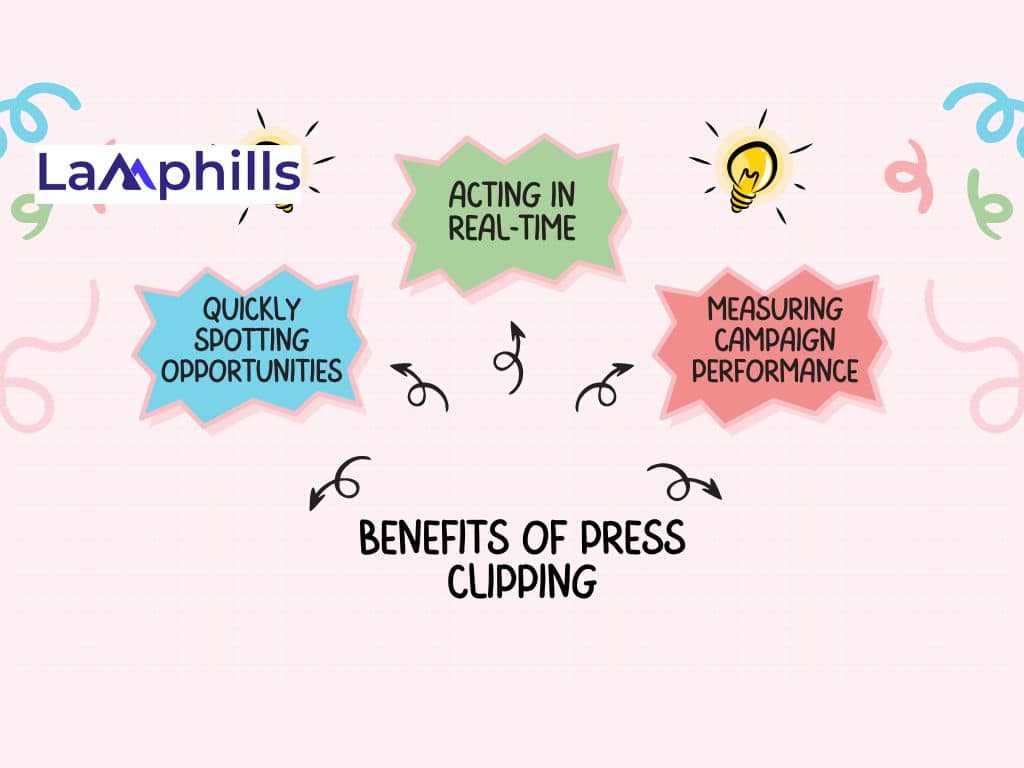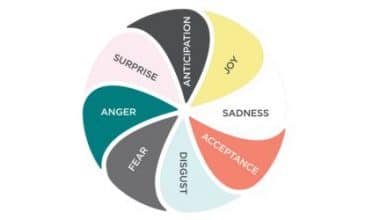PR Clipping, also known as Press clipping, is a method businesses or agencies use to track how often a company is mentioned in different media, like newspapers, websites, or TV.
My first time clipping press coverage was for a major event. It was a challenging task. Our company had just launched a new product, and the media attention was overwhelming. As time passed, I realized the need for a simple process to manage and store all the media mentions.
That experience taught me the importance of efficient press clipping. Now, with years of experience in public relations, I’ve developed a reliable method that ensures no important coverage is missed.
Gathering press clippings is essential to stay updated on recent mentions, monitor competitors, evaluate your strategy, and report progress to clients or stakeholders. This article explains everything about PR clipping, which started with traditional media (TV, radio, newspapers) and now includes digital media too. Let’s get started.
Key Takeaway
- PR clipping (also called press clipping) is a way for businesses or agencies to count how often a company is mentioned in print, online, or broadcast media.
- Originally, PR was done manually, each newspaper was reviewed individually, and the pages that dealt with the topic of interest were selected and filed in folders or binders. With the passage of time and technological development, the procedure changed a lot.
- The process is essential for keeping track of how brands are shown in all types of media, both online and offline. Without a PR clipping tool, it’s almost impossible to find and review every mention of your brand.
- PR clipping tools to choose from include, Cision, Meltwater, Critical Mention, Burrelles, Mention, Brandwatch, BuzzSumo, Muck Rack, NewsWhip, Agility PR Solutions.
Read Also: Press Release Examples to Inspire You in 2024 (+ Expert Tips & Templates)
What is Press Clipping
PR clipping (also called press clipping) is a way for businesses or agencies to count how often a company is mentioned in print, online, or broadcast media.
It involves gathering mentions from media content. This typically includes analyzing public relations efforts and assessing the effectiveness of the strategies used. The process usually concludes with the creation of a detailed coverage report.
Originally, PR was done manually, each newspaper was reviewed individually, and the pages that dealt with the topic of interest were selected and filed in folders or binders. With the passage of time and technological development, the procedure changed a lot.
For instance, by checking mentions on a campaign, you can see which people saw the news, where it got the most likes and comments, and if the campaign was worth the money.
Reasons why Press Clippings are Important
Here’s why you should collect, track, and analyze press clippings.
#1. Media Monitoring and Analysis

The process is essential for keeping track of how brands are shown in all types of media, both online and offline. Without a PR clipping tool, it’s almost impossible to find and review every mention of your brand.
With the growth of digital media, manually checking online press clippings would require hiring one or more people to do so. But with special tools for media monitoring, you can easily see the public’s opinion of your brand across different platforms, monitor your brand’s visibility, and estimate the reach of your media coverage.
#2. Measuring PR ROI
Measuring the success of public relations (PR) efforts through press clippings is essential because it helps businesses understand the value they’re getting from their investment. This means checking if the benefits of PR actions outweigh the costs. Press clippings are articles or mentions in the media that show where and how often a company or person is talked about. By looking at these clippings, businesses can see how visible they are and how effective their PR strategies are.
This information helps them decide if their current PR methods are working well to increase brand recognition, engage customers, or boost sales. It also guides them in tweaking their strategies for even better outcomes in future projects. Overall, press clippings are useful for showing how successful PR efforts are to those involved or interested in the business.
#3. Brand Image Management

Image by rawpixel.com on Freepik
Let me explain a little more about what I mentioned earlier. It’s important to regularly check how your brand is mentioned in the news for good brand management.
If you only pay attention to one platform, you might not fully understand how people feel about your brand in other areas. Using services that collect news mentions makes this easy, just one click instead of much effort.
Tools that monitor the media can tell you about the general mood in these mentions, like if there’s a sudden rise in any type of mention or more negative comments. If that happens, it’s time to act quickly.
#4. Media Presence of Competitors
How can you be sure you’re doing well if you’re not keeping an eye on your competitors? You might measure your success, but understanding what your competitors are up to is a key advantage of tracking mentions.
What exactly does this mean?
Suppose a competitor is doing well in specific, smaller media outlets but not in the major ones. In that case, it might be a good idea to focus on those smaller outlets too, or change your strategy to reach other platforms where your audience hangs out.
#5. Adjusting and Improving the Approach
Press clippings help you improve your strategy by showing how people and the media react to your work. By looking at these clippings, you can see what parts of your campaign are successful and what parts need work. This helps you adjust your approach, messages, and who you are targeting. Press clippings also reveal new trends and ideas in your field that you can use in your future efforts. Overall, they are a key resource for making sure your communications stay effective and current.
Are you meeting your goals well?
To find out if you need to improve or if your strategy is on track, review press clippings.
- It’s widely agreed that you should check these daily, especially if you’re managing a large brand.
- If progress seems slow, you can change your approach by looking at the data for each press clipping.
With modern PR tools, you can track and review multiple mentions at once, saving you the need to go through them one by one.
Press Clipping Purposes and Benefits

Media monitoring services provide a helpful way to boost your brand’s visibility. They analyze your press coverage and suggest changes to improve your public relations approach. Tools like Prowly make it simple to keep up with news and make quick, informed choices.
#1. Quickly Spotting Opportunities
Press clippings help you quickly spot new opportunities by keeping you updated on the latest media trends and topics. By keeping an eye on these clippings, you can discover new markets or public interests that match your business goals. This information allows you to act on opportunities before your competitors, giving you an edge.
Press clippings can also show you needs or gaps in the market that your products or services can meet. Overall, staying informed through media coverage helps you quickly adjust and refine your strategies, making your business more agile and relevant.
#2. Measuring Campaign Performance
Press clippings help you see how well your campaigns are doing by showing real examples of media coverage. They let you figure out what parts of your campaign are getting noticed and what parts aren’t. By looking at these clippings, you can spot trends and subjects that interest your audience, which helps you improve your future campaigns to engage people better.
Also, by tracking the success of your campaigns through these clippings, you can show stakeholders the benefits of your marketing work. This helps you make smarter choices for upcoming campaigns, making sure you use your resources in the best way to have the greatest effect.
#3. Acting in Real-time
Press clippings give you quick updates on what the media says about your campaigns, letting you respond fast to what people think. This fast action helps you deal with bad news quickly, which can stop it from hurting your brand’s image. It also lets you use good news to your advantage by sharing successful stories more widely through your marketing.
By keeping track of media reactions right as they happen, you can tweak your campaigns to keep them effective and relevant. In short, using press clippings promptly can make your communication strategies more flexible and effective.
You see the benefits of PR clippings, but how do you get them? Here are some easy steps to help you start. Let me show you how to clip press coverage.
How to do a Press Clipping?
Press clippings are very useful for seeing how people view your brand and for planning how to improve your brand’s visibility and reputation.
Here’s a simple guide to help you start with your press clipping. As I mentioned before, these are the practical steps I used, and the results were amazing.
Step 1: Set a Schedule
Choose how often you want to gather these clippings. You can do this daily, weekly, every two weeks, or monthly, depending on your needs and how fast things change in your industry.
Step 2: Choose Monitoring Tools
Use tools that let you keep track of your brand mentions across various media, like newspapers, online news, TV, radio, and social media. Many digital tools can help automate this, just make sure they check the media sources important to you.
Google Alerts are useful, but for thorough coverage, I use media monitoring tools like Cision or Meltwater. These platforms collect mentions from various sources, including print, online, and broadcast media. They save me hours of manual searching and provide detailed analytics to measure the impact of the coverage.
Step 3: Define Metrics
Now, think about what you want to track. This could be how often your brand is mentioned, the traffic these mentions bring, or how often your brand is talked about on social media. Knowing what to measure helps you focus and sort through the data.
Step 4: Set Up Google Alerts
The first step in effective press clipping is setting up Google Alerts for key terms. This free tool notifies you whenever your specified words appear online. I set alerts for our company name, product names, and important industry terms. This way, I’m always aware of new coverage as soon as it happens.
Step 5: Track Social Media Mentions
In today’s digital age, social media is a crucial part of press coverage. Tools like Hootsuite or Mention allow me to track social media mentions across multiple platforms. This helps in capturing the real-time buzz and opinions about our brand.
Step 6: Organize Coverage Chronologically
Sort the data by type of media (traditional vs. digital), media outlet, and other important factors. This makes it easier to analyze the information.
Once I’ve gathered all the mentions, I organize them by date. This helps in understanding the timeline of the coverage and spotting peaks in media attention. I use a simple spreadsheet to list all mentions with dates, sources, and links for easy reference.
Step 7: Analyze the Content
Look at the tone and context of each mention to see if they’re good, bad, or neutral, and think about how they might affect your brand’s image.
Also, classifying coverage by type (article, blog post, social media mention) and source (major publication, niche blog, influencer) helps in analyzing the reach and credibility of the coverage. Major publications often have more influence, while niche blogs might reach a more targeted audience.
Step 8: Summarize Key Points
Finally, compile all your findings into a clear document using text and graphics. This summary should be easy to understand and help you make decisions to improve your brand’s media presence.
For each piece of coverage, I summarize the key points. This includes the main message, any quotes from company representatives, and the overall tone of the piece. These summaries give a quick overview of how our message is being received in the media.
Step 9: Review and Act
Use what you learn from the press clippings to make better decisions about your public relations efforts, marketing plans, or other parts of managing your brand.
Note: Not all coverage is equally important. High-impact mentions from top publications or influential bloggers can significantly boost our brand’s credibility. I highlight these mentions and often share them with our team and stakeholders to show the success of our PR efforts.
Also: To keep everyone informed, I compiled all the information into a detailed press coverage report. This report includes a chronological list of mentions, categorized coverage, key point summaries, and highlighted high-impact mentions. It’s a valuable document for our marketing and PR teams to evaluate our media strategy.
Step 10: Archive and Revisit
Finally, I archive all the clippings and reports for future reference. Periodically revisiting these archives helps in identifying long-term trends and planning future media strategies. It’s also a great resource for preparing for new campaigns, as past coverage can provide insights into what worked and what didn’t.
Some PR Clipping Tools
There are many PR clipping tools to choose from. The best one for you depends on what you need. Here are some options:
1. Cision: Cision lets you track media mentions and manage PR tasks, including sending press releases and keeping in touch with journalists.
2. Meltwater: Meltwater helps you monitor media and social media to see how your PR efforts are doing and offers insights to improve your PR strategy.
3. Critical Mention: Critical Mention provides real-time monitoring of TV, radio, online news, and social media, with detailed reports to measure PR campaign success.
4. Burrelles: Burrelles offers monitoring of traditional and digital media, giving insights to evaluate PR success and media impact.
5. Mention: Mention is a simple tool for real-time monitoring of websites, blogs, and social media to track and analyze brand mentions and PR coverage.
6. Brandwatch: Brandwatch combines media monitoring and social listening to give insights into brand mentions and PR performance, helping identify trends and measure impact.
7. BuzzSumo: BuzzSumo helps you find popular content, track influencers, and monitor PR mentions on the web and social media, showing which content is performing well.
8. Muck Rack: Muck Rack offers a media database, monitoring, and PR analytics to manage relationships with journalists and track PR coverage.
9. NewsWhip: NewsWhip predicts which stories will gain traction and shows how PR efforts are performing, helping you stay ahead of trends.
10. Agility PR Solutions: Agility PR Solutions provides tools to monitor media, analyze PR campaigns, and improve PR strategies with comprehensive coverage and actionable insights.
Conclusion
Effective press clipping is more than just collecting mentions; it’s about creating a structured process to manage, analyze, and use media coverage to its fullest potential. By following these nine steps, I’ve streamlined our press clipping process and ensured we never miss important media mentions. Whether you’re a seasoned PR professional or just starting, this method will help you stay on top of your press coverage and make the most of every media mention.
Remember, while making a press clipping might seem like a lot of work, it provides a valuable overview of how the public sees your brand, allowing you to make smart improvements. Ready to get started?
Bonus Answers to Frequently Asked Questions.
What is a press clipping service?
PR clipping (also called Press clipping) is a way for businesses or agencies to track how often a company is mentioned in newspapers, online articles, or on TV and radio.
What is an example of a press clipping?
A PR firm working with various clients can use PR clipping to check how well a campaign is doing. For example, if a PR team promotes a new dish at a client’s restaurant, they might use a PR clipping tool to see how often the media mentions the promotion’s slogan.
What is a clipping system?
In technology, computing, programming, and communications, clipping means cutting out parts of something larger to focus on specific content or improve performance.
What are the 4 types of clipping?
There are four types of clipping: back clipping, fore-clipping, middle clipping, and complex clipping.
What are clips in public relations?
PR clipping is a way to check how well your public relations work is going. It involves collecting all the media mentions of your brand. This helps you see how often your brand is talked about in newspapers, TV, radio, or online.
Related Articles:
HOW TO WRITE & SEND OUT PRESS RELEASE EMAILS WITH TEMPLATES
The Ideal Press Release Length: How Much Should You Write
13 Press Release Headline Examples to Inspire You (+ Free Tips)






